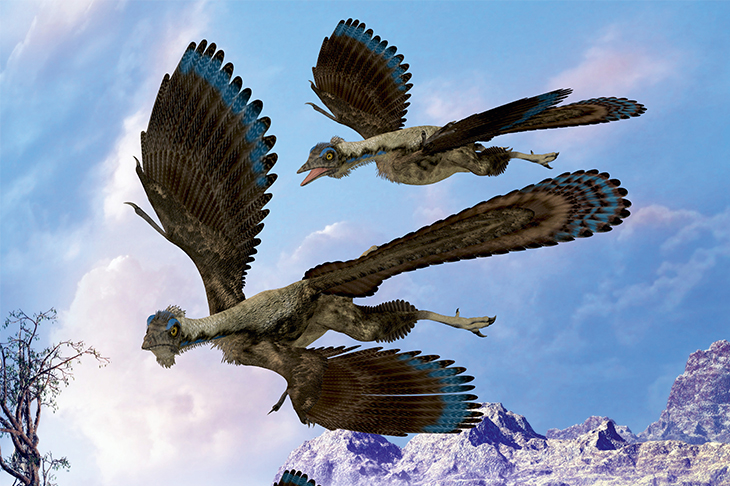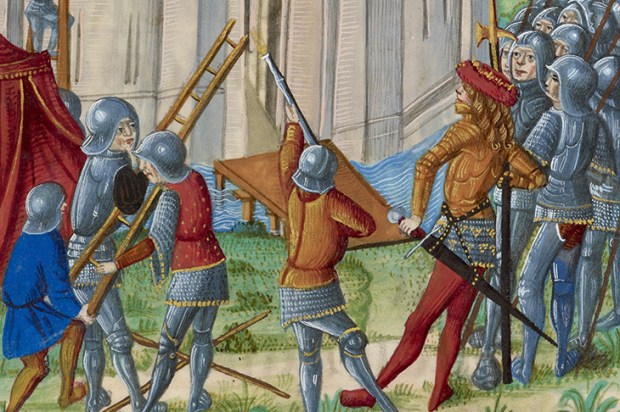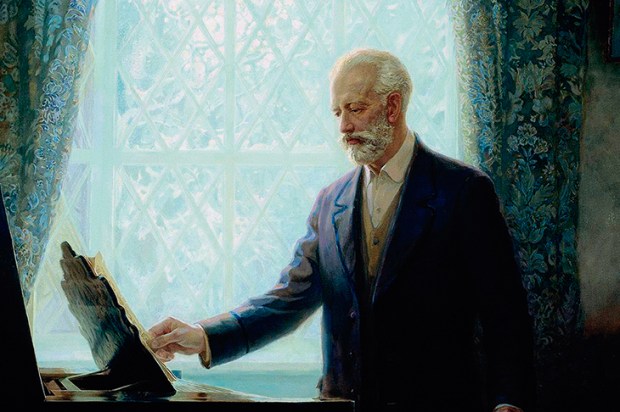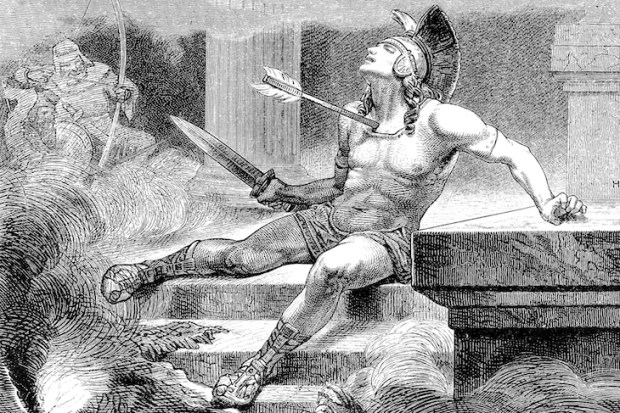The age of dinosaurs is a perennial favourite on any time traveller’s wishlist. Even though we’re technically still in it — birds carry on the legacy of Velociraptor and company — there’s an irresistible urge to visit the time when towering, scaly, feathery, toothy saurians stomped around the planet. Since backwards time travel is impossible and DNA degrades too fast for us to have any hope of creating a real Jurassic Park, however, what we know of the ‘terrible lizards’ is written in bone and fossil footprints, and paleontologist Steve Brusatte’s The Rise and Fall of the Dinosaurs weaves together these prehistoric pieces into a vibrant view of how dinosaurs originated and what happened to our Mesozoic favourites.
Brusatte, a paleontologist based at Edinburgh University, whose dinosaur-chasing career has taken him to Poland, Brazil, China and elsewhere, is as adept a scientific storyteller as any reader could ask for. This is no small feat. Like many other books by paleontologists, The Rise and Fall of the Dinosaurs is part Mesozoic tour and part memoir, using Brusatte’s own experiences and research interests to frame the broader scope of the prehistoric tale. We meet his heroes and colleagues along the way, with specific excavations and field sites forming anchor points to broader concepts about the dinosaur story from their Triassic origin through their Jurassic heyday and ultimately into their Cretaceous decimation.
Digging up bones is naturally part of the tale. ‘We’re obsessed with finding fossils and notorious for going to great (and sometimes stupid) lengths to discover new ones,’ Brusatte writes. But putting all those pieces together into a narrative of how dinosaurs began as tiny pipsqueaks around 235 million years ago and rose to global dominance requires agility with a keyboard rather than the blunt force of a rock hammer. Brusatte glides smoothly between memoir and scientific explanation. The personal approach makes one feel included in his explorations, as he explains the arc of the great dinosaur story from the middle of the New Mexico desert or from a cramped Beijing fossil lab.
The book largely follows Brusatte’s interest in the fuzzy and carnivorous. He starts with the origin of the dinosaurs and concludes just after the mass extinction that wiped out all the non-avian forms; but he lavishes the bulk of his time and attention on tyrannosaurs and the feathered dinosaurs close to the origin of birds. Fans of shovel-beaked herbivores like Parasaurolophus or the spiky likes of Stegosaurus might feel disappointed that the meat-eaters have most of the fun.
Still, Brusatte’s approach paints with a broad enough brush that the greater story of the terrible lizards shines through, highlighting just how rapidly our understanding of the past has changed. He tells us that a new dinosaur species is named just about every week, and that’s not even counting the reams of up-to-the minute papers on the biology of these marvellous animals. Our understanding of dinosaurs and their lives is constantly changing, carried out by ‘men and women of many backgrounds who came of age in the era of Jurassic Park’.
Even though the real non-avian dinosaurs died out 66 million years ago, they continue to evolve in our scientific imagination. This is the hidden lesson within Brusatte’s fossiliferous book. The popular image of science is often boiled down to a set of specialised disciplines that collect facts and store them on shelves, much like racks of old bones. But those engaged in paleontology are constantly altering ideas based on new finds, the old always being compared to the new.
Anatomical evidence has made it crystal clear that birds are living dinosaurs, for example, but how some feathery dinosaurs learned to fly — and why some airborne dinosaurs survived while others fizzled out — is still an open area of investigation. Likewise, there’s no question that an immense asteroid struck the Earth 66 million years ago and triggered a mass extinction, but what strokes of luck, both good and bad, sorted the survivors from the extinct are still being debated and analysed.
The resulting image isn’t of a science that is winding down and coming to a final synthesis. It’s of paleontology as a young, amped-up discipline that is trying to piece together how those lost Mesozoic worlds compare to our own. What emerges, Brusatte writes, underscores the conclusion that ‘dinosaurs were not aliens, nor were they failures, and they’re certainly not irrelevant’. Their story frames our own. Our distant ancestors survived the dinosaur reign, after all, and the fact that such a varied and successful group as the dinosaurs could be so dramatically cut down in their evolutionary prime continues to be a warning that extinction can act quickly and mercilessly. We have the bookends of the dinosaur story, but the narrative sweep of their history is still being expanded with every new find chipped and chiselled from the stone.
Got something to add? Join the discussion and comment below.
Get 10 issues for just $10
Subscribe to The Spectator Australia today for the next 10 magazine issues, plus full online access, for just $10.
You might disagree with half of it, but you’ll enjoy reading all of it. Try your first month for free, then just $2 a week for the remainder of your first year.














Comments
Don't miss out
Join the conversation with other Spectator Australia readers. Subscribe to leave a comment.
SUBSCRIBEAlready a subscriber? Log in